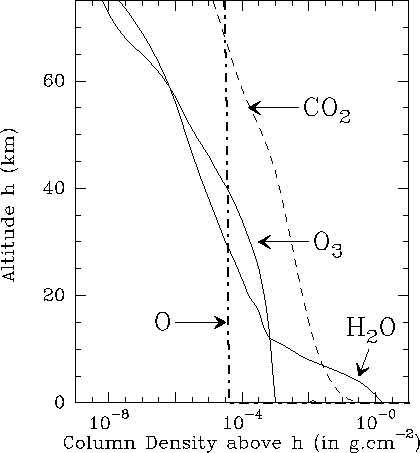For one molecule with n degrees of freedom (e.g. in the rigid-molecule
approximation, n=2 (deg. of rotation) +3 (of transl.) = 5 for O2 and
N2, and n= 3+3 = 6 for H2O), the internal energy per molecule is
The Enthalpy is
For adiabatic expansion, we have the standard relations
A mixture of ideal gases i= 1, 2, ... in a volume V behaves like an
ideal gas:
| Partial pressures: | (8.1) |
| Total pressure: | (8.2) |
Dry air is a mixture of N2, O2, ... molecules. It behaves indeed very
much like an ideal gas:
Ra=cpa-cva= 8.3143 J/mol-deg (vs 8.3149 for
an ideal gas), ![]() = 1.404 (vs 1.400 for ideal rigid molecules).
= 1.404 (vs 1.400 for ideal rigid molecules).
Wet air (without clouds) is a mixture of dry air + H2O molecules. It is customary
to denote by e the partial pressure of water vapor, pa that of dry air, and
p' the wet air pressure. The specific heats of water vapor are not that
different from those of ideal gases:
cvw= 25.3 + 2 10-3 (T-273);
![]() , vs
cv=3R= 24.9 and
, vs
cv=3R= 24.9 and
![]() for a rigid asymmetric
top.
for a rigid asymmetric
top.
Then, Dalton's law yields:
Then, for the adiabatic expansion of a wet air bubble, one has:
 |